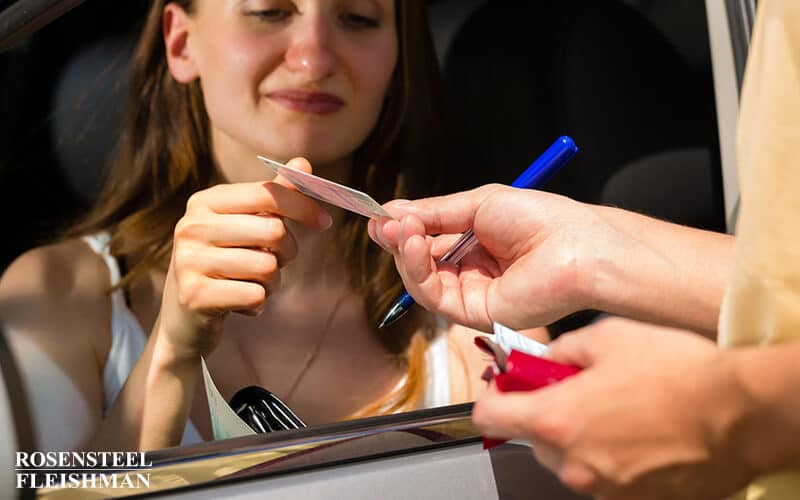While drunk driving accidents have been on the decline in the past few years, drunk driving is still a major problem in the United States and a leading cause of car accidents. The most recent statistics released by the National Highway Traffic Safety Administration show that approximately 28 people die in car accidents every day […]

“Normal” Driving as Reasonable Suspicion for Traffic Stop in North Carolina
A 2012 North Carolina Court of Appeals case addressed the issue of “normal” driving in connection with its analysis to determine whether the officer who stopped the defendant for impaired driving had reasonable suspicion to make that stop. Although certain driving patterns can be considered “normal,” this cannot be the only factor considered when determining whether a stop is justified by reasonable suspicion.
In State v. Osterhoudt, the officer who stopped the defendant saw him make a “wide right turn” where “half of defendant's car went over the double yellow line into the turning lane for traffic coming in the opposite direction.” The street onto which the defendant was turning was described as a three-lane road with one lane for traffic going in the direction the defendant was going and two lanes going in the opposite direction - one lane was a regular lane and the other lane was a left turn lane. The officer stopped the defendant for crossing the double yellow line and what the officer thought was a violation of G.S. 20-146(a). The defendant was then arrested for dwi.
G.S. 20-146(a) states that
Upon all highways of sufficient width a vehicle shall be driven upon the right half of the highway except as follows:
(1) When overtaking and passing another vehicle proceeding in the same direction under the rules governing such movement;
(2) When an obstruction exists making it necessary to drive to the left of the center of the highway; provided, any person so doing shall yield the right-of-way to all vehicles traveling in the proper direction upon the unobstructed portion of the highway within such distance as to constitute an immediate hazard;
(3) Upon a highway divided into three marked lanes for traffic under the rules applicable thereon; or
(4) Upon a highway designated and signposted for one-way traffic.
At trial, the court determined that the defendant did not violate G.S. 20-146(a) because the statute did not require a vehicle to be driven on the right half of a highway which was divided into three lanes and the road onto which the defendant was turning was divided into three lanes. The trial court concluded the following:
That it is not a violation of the General Statutes for a vehicle to cross the double yellow line separating the turn lane from the straight lane at this particular intersection while making a right turn so long as the vehicle does not cross the centerpoint of the roadway, and such turn is made in safety and no traffic is affected.
That this driving falls within a normal pattern of driving behavior, and the Trooper's observations do not constitute a reasonable articulable suspicion that any crime has occurred or is occurring.
The State appealed to the court of appeals, which agreed with the trial court’s analysis that the defendant did not violate G.S. 20-146(a). However, the court of appeals concluded that the defendant violated two other statutory provisions: G.S. 20-146(d) and G.S. 20-153(a).
G.S. 20-146(d) states that
Whenever any street has been divided into two or more clearly marked lanes for traffic, the following rules in addition to all others consistent herewith shall apply.
(1) A vehicle shall be driven as nearly as practicable entirely within a single lane and shall not be moved from such lane until the driver has first ascertained that such movement can be made with safety.
(2) Upon a street which is divided into three or more lanes and provides for the two-way movement of traffic, a vehicle shall not be driven in the center lane except when overtaking and passing another vehicle traveling in the same direction when such center lane is clear of traffic within a safe distance, or in the preparation for making a left turn or where such center lane is at the time allocated exclusively to traffic moving in the same direction that the vehicle is proceeding and such allocation is designated by official traffic-control device.
(3) Official traffic-control devices may be erected directing specified traffic to use a designated lane or designating those lanes to be used by traffic moving in a particular direction regardless of the center of the street and drivers of vehicles shall obey the direction of every such device.
(4) Official traffic-control devices may be installed prohibiting the changing of lanes on sections of streets, and drivers of vehicles shall obey the directions of every such device.
The court concluded that by making a wide right turn the defendant violated subsection (1) because he failed to stay within his lane and subsections (3) and (4) because he failed to obey the yellow line markings on the street.
G.S. 20-153(a) states that
Both the approach for a right turn and a right turn shall be made as close as practicable to the right-hand curb or edge of the roadway.
By making a wide right turn, the defendant did not keep as close as practicable to the curb and violated G.S. 20-153(a).
Because the officer stopped the defendant for crossing the double yellow line, which violated the above provisions, it did not matter that the officer wrongly believed the defendant violated G.S. 20-146(a) when he stopped the defendant. Therefore, the court concluded that the officer’s stop of the defendant was reasonable.
In its opinion, the court of appeals also addressed the trial court’s conclusion finding that the defendant’s driving fell “within a normal pattern of driving behavior.” The court of appeals acknowledged that they had in the past “classified a defendant's driving as normal when looking at the totality of the circumstances” but that the classification of driving as “normal” “has never been the only objective factor we have examined to determine whether a police officer has reasonable articulable suspicion.” The court faulted the trial court for not looking “beyond whether defendant’s driving was normal in order to determine whether [the officer] had reasonable suspicion.”
This analysis makes sense considering that the court determined that the defendant actually did violate a statute. We cannot assume that just because a large number of people disregard a traffic law, then a person cannot be stopped for this violation because it is “normal” to disregard the traffic law.
However, we can imagine that there are some right hand turns for which a car, especially a bigger car, might have to cross the yellow line marking, especially if that line creates a narrow lane to turn into. This seems to be what the trial court was addressing in its finding
That it is not a violation of the General Statutes for a vehicle to cross the double yellow line separating the turn lane from the straight lane at this particular intersection while making a right turn so long as the vehicle does not cross the centerpoint of the roadway, and such turn is made in safety and no traffic is affected.
The court of appeals noted that the officer “testified that there was nothing in the roadway that would cause defendant to make a wide turn to avoid hitting something.” However, if the defendant had presented evidence that the turn was especially sharp and the lane was especially narrow, and that he had “first ascertained that such movement can be made with safety,” then it is arguable that the defendant would not have violated the statutes.
If you have been charged with impaired driving, contact Rosensteel Fleishman Car Accident & Injury Lawyers (704) 714-1450, to speak with an attorney about your options.
Additional DWI Articles
I. You Will Need a Lawyer Just because someone has had drinks, does notautomatically mean that the law should rest on their shoulders and result in an automatic conviction. That is partly why, under North Carolina law, a series of safeguards have been adopted. These safeguards often rely on, and are helpfully followed, by experienced […]
I. Working While Impaired It is a sobering crisis. We cannot say for sure just exactly how many people drink during work hours, and then drive a vehicle within a short period of time after leaving the restaurant or bar. Often, it requires help from a car accident attorney to see if this drinking is […]
I. PC for DWI An experienced Charlotte criminal trial attorney is aware of the unique place that DWI charges can play in North Carolina courts. There’s no doubt that the public generally supports crackdowns on DWI offenses in North Carolina. But here’s the news flash: as important as DWI is, to maintaining public safety, it’s […]
